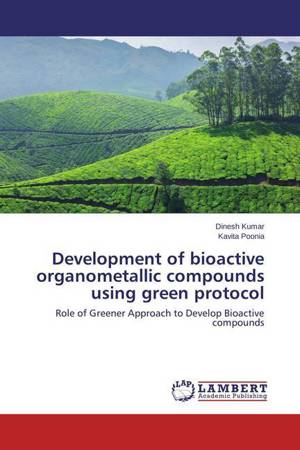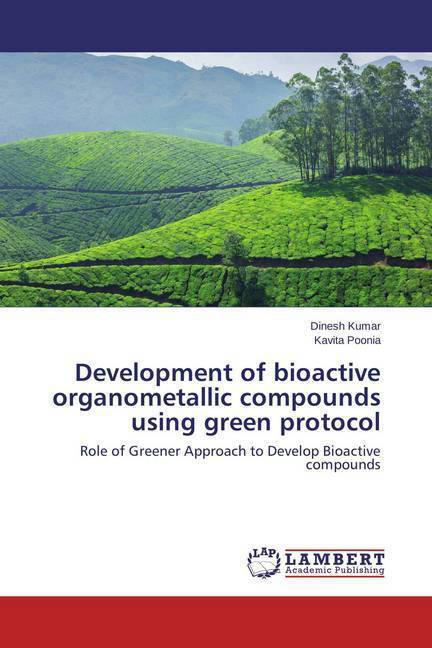
Bedankt voor het vertrouwen het afgelopen jaar! Om jou te bedanken bieden we GRATIS verzending (in België) aan op alles gedurende de hele maand januari.
- Afhalen na 1 uur in een winkel met voorraad
- In januari gratis thuislevering in België
- Ruim aanbod met 7 miljoen producten
Bedankt voor het vertrouwen het afgelopen jaar! Om jou te bedanken bieden we GRATIS verzending (in België) aan op alles gedurende de hele maand januari.
- Afhalen na 1 uur in een winkel met voorraad
- In januari gratis thuislevering in België
- Ruim aanbod met 7 miljoen producten
Zoeken
Development of bioactive organometallic compounds using green protocol
Role of Greener Approach to Develop Bioactive compounds
Dinesh Kumar, Kavita Poonia
Paperback | Engels
€ 72,45
+ 144 punten
Omschrijving
The present book incorporates the results of the synthesis, characterization and several biological aspects of the azomethine complexes of titanium(IV) and zirconium(IV). The azomethines used in these studies are hydrazinecarboxamides, hydrazinecarbothioamides, S-benzyldithiocarbazates, S-methyldithiocarbazates and benzothiazo-lines. These azomethines and their corresponding metal complexes were synthesized by both the synthetic procedures, i.e., microwave as well as the column heating. A comparison has been made between these two synthetic methods, on the basis of the yield of the products, refluxing time and the solvent consumed. The resulting complexes have been characterized on the basis of elemental analyses, conductance measurements, magnetic susceptibility and molecular weight determinations. The bonding pattern and coordination sphere of the complexes around the metal atom have been deduced on the basis of UV, IR, 1H NMR and 13C NMR spectral studies. Some of the ligands and their respective complexes were also screened for their fungicidal and bactericidal studies. Few ligands and their corresponding metal complexes have also been tested in vivo activity.
Specificaties
Betrokkenen
- Auteur(s):
- Uitgeverij:
Inhoud
- Aantal bladzijden:
- 204
- Taal:
- Engels
Eigenschappen
- Productcode (EAN):
- 9783659715471
- Verschijningsdatum:
- 29/05/2015
- Uitvoering:
- Paperback
- Afmetingen:
- 150 mm x 220 mm
- Gewicht:
- 304 g

Alleen bij Standaard Boekhandel
+ 144 punten op je klantenkaart van Standaard Boekhandel
Beoordelingen
We publiceren alleen reviews die voldoen aan de voorwaarden voor reviews. Bekijk onze voorwaarden voor reviews.









